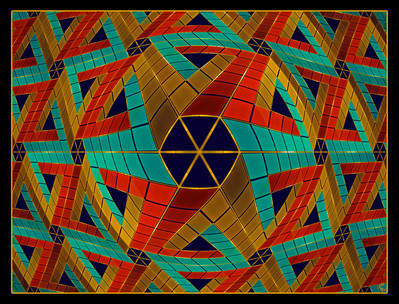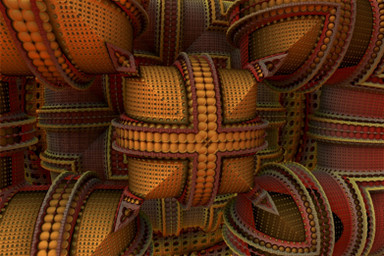HOME | DD
 Mobilelectro — incorrect escher grid
Mobilelectro — incorrect escher grid

Published: 2007-10-27 03:09:19 +0000 UTC; Views: 3865; Favourites: 38; Downloads: 992
Redirect to original
Description
apo/pluginsTried to get the Escher grid that his Printgallery piece was based on, not there yet check my next fractal.
Related content
Comments: 17


this week, in my WEEKLY NEWS ARTICLE ~
'Fractal Friday's Wall of Wows! ~ 11/9/07 ~ [link]
*Come and check it out! ~



👍: 0 ⏩: 0

Hi there.
This fractal has been included in my bi-monthly newsletter showcasing unique fractal art, Never Duplicated Fractals!
Please tell me if you wish not to be included in future editions. Either way, congratulations!
👍: 0 ⏩: 0

I left my reply at Michael's link above.
👍: 0 ⏩: 0

escher is "Escher's map" z' = z(1 + cos beta + isin beta ) / 2). There is a small article on Wolfram's Mathworld here: [link] I assure you the code correctly implements Escher's Map. I'll take a look at escher's grid a little more though and let you know what I find out.
👍: 0 ⏩: 1

Wolfram's escher map equation must be an approximation of the Escher grid then. One of the main characteristics of Escher's grid is that it repeats itself ever smaller in the center as well as rotationaly around the outside of the grid.
Hendrik Lenstra project created the right geometry seen at the link above and by using + and - parameters was able to create a variety of other grids that had the same properties. All of these grids have an exponential quality to them and reduce to infinity at the center.
Wolfram's map rotates around the center only. There is also no way to set the parameters to get the variety of grids that Hendrik Lenstra's team produced or even an acurate reproduction of escher's own version.
👍: 0 ⏩: 1

No, Escher's Map doesn't approximate anything. It is the same transformation that Escher did in the painting. The Lenstra project has extended that transformation to do something that MC Escher never did. Escher left a blank spot where Lenstra has added recursive iterations.
I'll take a look at adding the extension in. It looks like it might be cool. It might be difficult to make it look smooth though. I'd have to figure out probabilities and areas so the density stays as even as possible in the repeated sections.
👍: 0 ⏩: 2

Hey Joel,
You said---(I'd have to figure out probabilities and areas so the density stays as even as possible in the repeated sections.)
After playing with this variation for a while I think this is also a problem with the variation in it's present state. It is nearly impossible to get rid of the seam where it connects back around to itself which diminishes the unity of the image although the visible seam can also create interesting but different effects in its own way.
👍: 0 ⏩: 1

There is nothing anybody can do about that. That's just the way Apophysis works.
👍: 0 ⏩: 0

That sounds very cool if you can pull it off. I did finally work it out on this newer image. [link]
The scale thing was the trick ( 1 - 256) on the variables and then zooming into the image enough the see the reduction of scale in the center.
By the way, you're right, Escher's print does not reduce like you say and has his signature in the middle but the grid he made does reduce and you can read about it in Escher's The Magic Mirror book. He noticed it repeating itself smaller and smaller into the center and the grid he made almost completely fills in at the center unlike the print gallery image.
I think I understood how the Lenstra project differed from Escher's print.
👍: 0 ⏩: 0

I don't care how 'incorrect' it is. Very wild piece!
👍: 0 ⏩: 1

Thanks, I had hopes the escher variation would produce a grid form more like the original escher grid it is based on however it can create some different kinds of distortion.
👍: 0 ⏩: 0






































